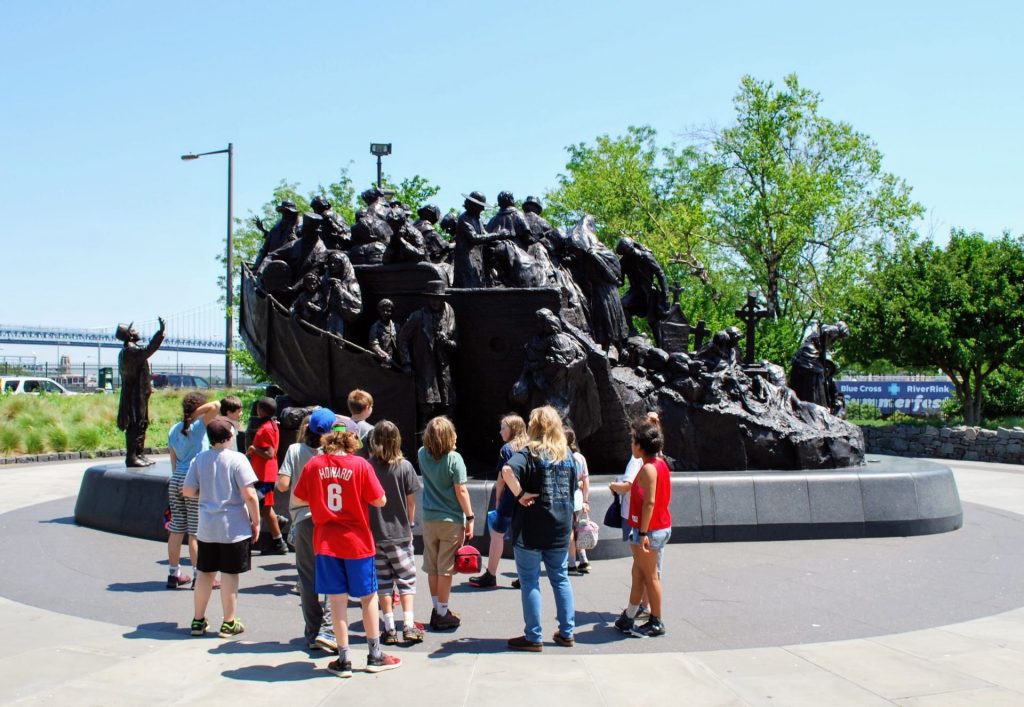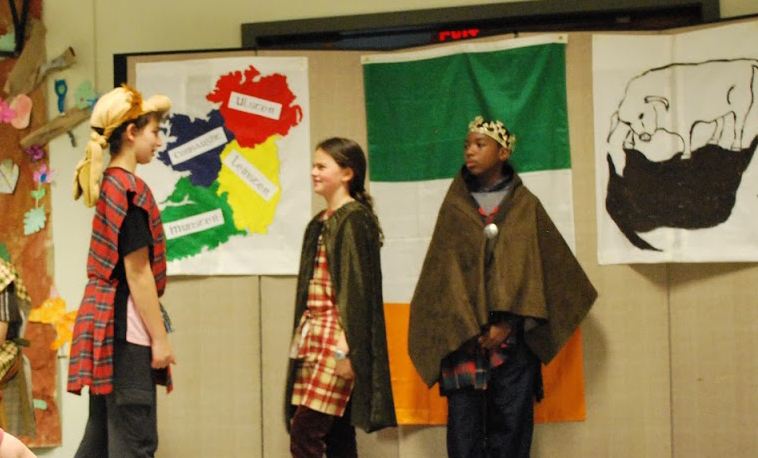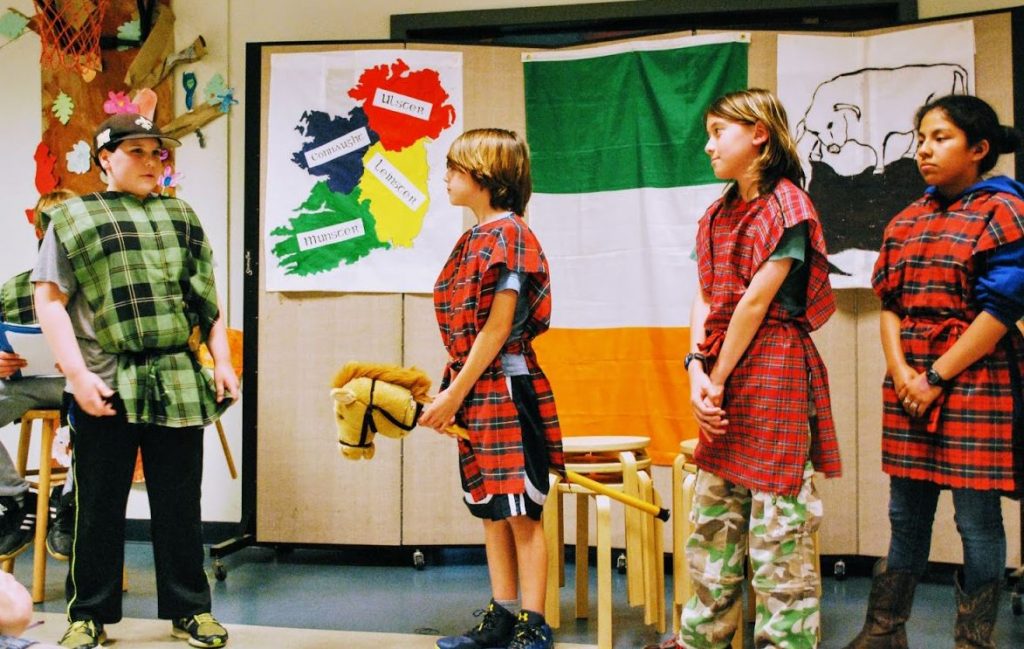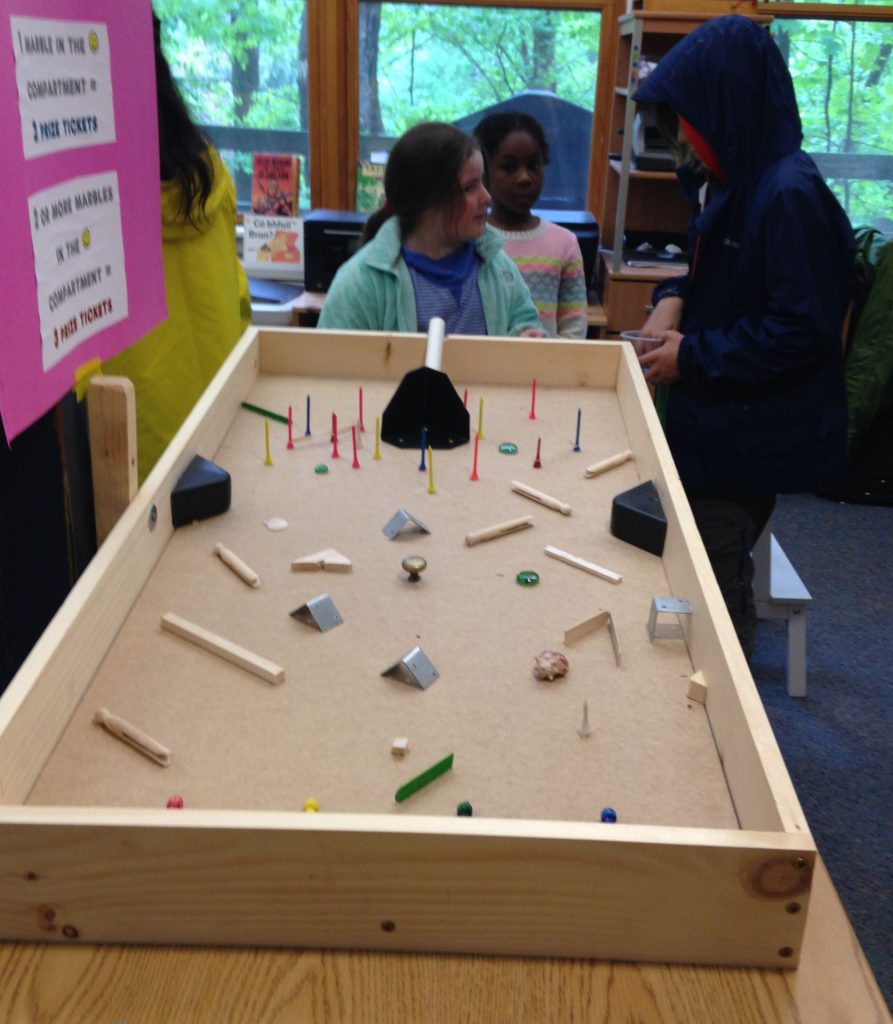Our literature-based study of the internment of ethnic Japanese during WWII came to an end with a wonderful whole group discussion. We started by asking about the many different kinds of migrations that were part of the entire history. Students came up with quite a few: coming to America from Japan in the first place, sending young people back to Japan for their cultural education, being moved first to holding centers and then to camps, being transferred from one camp to another, being released from the camps to attend college in the Midwest and East and to enlist in the army to fight in Europe, and leaving the camps to go back home or to a new location when they were closed.
We talked about the lack of facilities and proper supplies in the camps that was changed very little during the entire internment period — housing, privacy, bathrooms, food, medical care, schools and equipment, recreation, and more. Students were keenly aware that circumstances in the camps destroyed family life, in part because many adults were ashamed by their incarceration, depressed by the lack of things to do that would make them feel productive, and unable to control their children and adolescents. The large dining halls meant that families did not have to eat together, and this led to a loss of control over the children and teens. On the other hand, our students pointed out that some things did turn out to be good — some residents were able to learn English for the first time; some started schools for children and cultural activities for the adults and were pleased with new-found leadership skills. We talked about the irony of being encouraged to join the army after being locked up as potential traitors with no evidence to support that concern. Several already knew about the courage and heroism in the all-Japanese fighting units.
Students were quite eloquent about what they thought the American government should have done from the beginning of immigration from Japan: allow ownership of land by non-citizens, permit them to become citizens, and “Welcome them and protect them when the war broke out,” as one student said. They saw that some Japanese people became politicized against the USA because of how they were treated after Pearl Harbor, despite being loyal until that time. Our students were also able to see the connection between the fear and racism of that period with the hostility toward Muslims now. There is a very keen sense of social justice alive and well in our classroom.
We’re also coming to the end of our study of Ireland. We went to see the Irish Famine Memorial on the waterfront in Philadelphia. The massive bronze sculpture showed a complex blend of crop failure, despair, emigration, and arrival. Students were able to identify all of those elements. They realized that it must have been created in a manner similar to that used for the Famine Ship sculpture located at the foot of Croagh Patrick in County Mayo, which we learned about in a documentary some weeks before. They read the 8 informational plaques that are part of the part that surrounds the sculpture and agreed that a person who knew nothing about the famine and the socio-political events surrounding it would come away with a lot after visiting the site.
We’re well into 20th century Ireland now. We’ve addressed “The Troubles” with a fairly gentle hand, thinking that some of it is probably more appropriate for our students when they are a bit older. The acts of terrorism conducted by both sides as well as the hunger strike that led to the deaths of 10 prisoners in the prison known as The Maze (Long Kesh) in Northern Ireland involve a level of political and emotional complexity that would be difficult for many of our students to understand right now. On a lighter note, their performances of The Táin and their pennywhistle playing were a delight to see and hear.
We are now in the midst of watching the film Into the West, which is a wonderful story in itself and also provides some insight into the lifestyles and conflicts of Irish travelers in recent years — some of whom have responded positively to government encouragement to become “settled” and ultimately assimilated. Others have had a lot of success in the courts for being recognized as a distinct ethnic minority who are entitled to maintain their nomadic culture and traditions within the larger Irish society.
We have just a couple of Wednesday sings left in the year. Last week, we invited the students who will be fifth graders in our building next year to join us for one. Our current fifth graders also hosted them for lunch in our classroom while I met with the current sixths in Diane and Jeri’s room to continue working on choosing their gift to the school. We are keenly aware that it’s a time of transition for all of us. Graduates are working on their speeches, and fifths are putting together the skits. The end is near.











